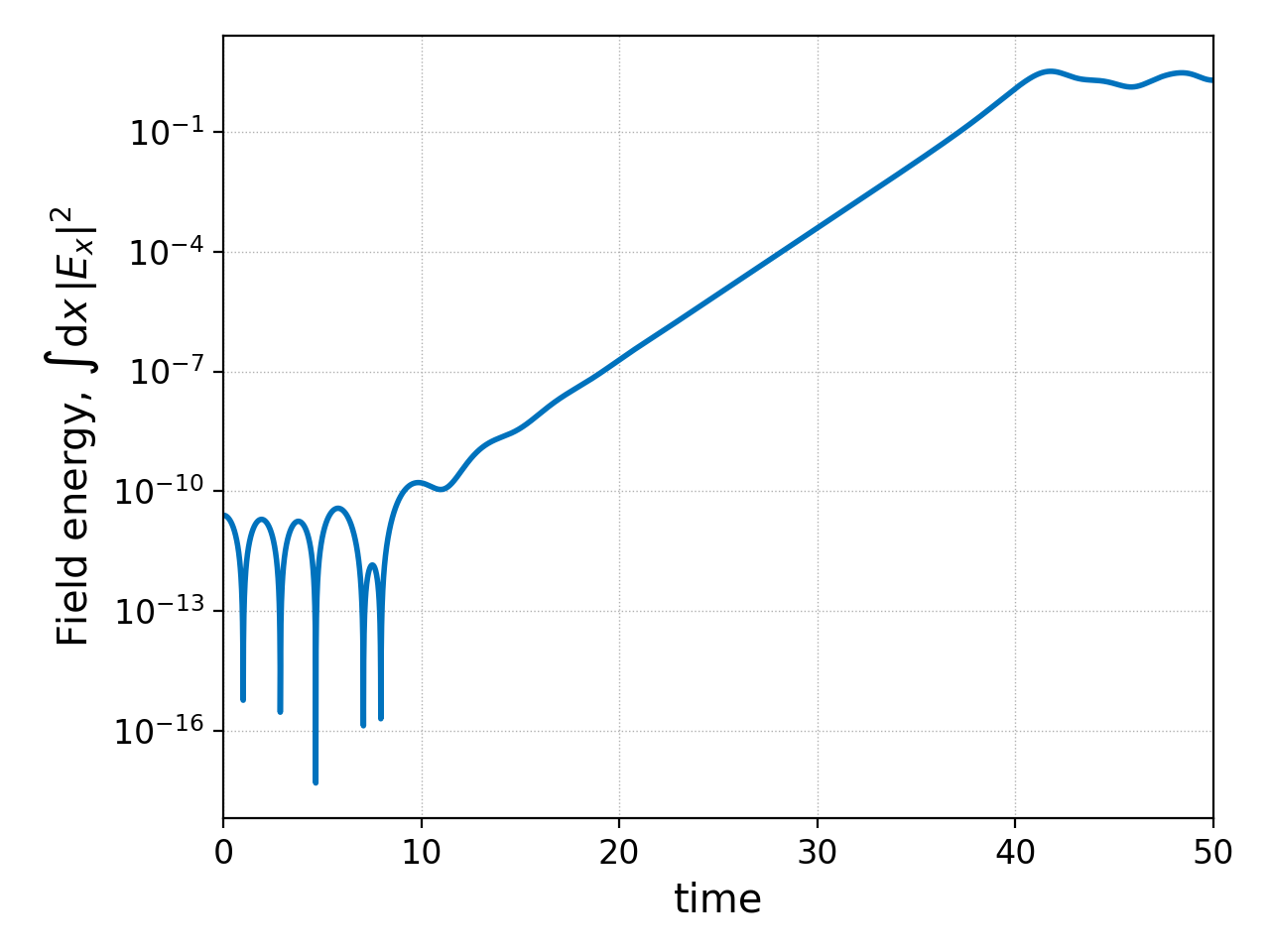growth¶
Measure the growth rate in the time trace of a quantity, assuming that it is a squared quantity (e.g. \(\phi^2\), \(|\mathbf{E}|^2\)). If one applies this to a non-squared quantity then the growth-rate would be off by a factor of two.
The command works by fitting \(A e^(2\gamma t)\) to the data and returning \(\gamma\).
Command line¶
Command help
$ pgkyl growth --help
Usage: pgkyl growth [OPTIONS]
Attempts to compute growth rate (i.e. fit e^(2x)) from DynVector data,
typically an integrated quantity like electric or magnetic field energy.
Options:
-u, --use TEXT Specify a 'tag' to apply to (default all
tags).
-g, --guess <FLOAT FLOAT>... Specify initial guess
-p, --plot Plot the data and fit
--minn INTEGER Set minimal number of points to fit
--maxn INTEGER Set maximal number of points to fit
-i, --instantaneous Plot instantaneous growth rate vs time
-h, --help Show this message and exit.
The two tream instability simulation produces a field energy time trace that can be plotted with
pgkyl two-stream_fieldEnergy.bp sel -c0 pl --logy

We have selected the \(E_x\) component because all other field components are essentially zero. We can then measure the growth rate in the field energy with the following command
pgkyl two-stream_fieldEnergy.bp sel -c0 growth
Such command produces the output below
fitGrowth: fitting region 100 -> 7916
gamma = +3.79836e-01 (current +5.814e-02 R^2=7.407e-01) 99.99% done [========= ]
gamma = +3.79836e-01
This output indicates that it made the measurement taking into account all the data between the 100th and the 7916th point (if you examine the file two-stram_fieldEnergy.bp you’d find that it has 7916 data points), and arrived at the growth rate \(\gamma=0.379836\), the the \(R^2\) of the fit being 0.7407.
The growth command also allows for specifying a window in which to
perform the measurement via the --minn and --maxn flags. We could
then limit the window between the 2000th and the 6000th point with
pgkyl two-stream_fieldEnergy.bp sel -c0 growth --minn 2000 --maxn 6000
and the output would be
fitGrowth: fitting region 2000 -> 6000
gamma = +3.79836e-01 (current +4.322e-01 R^2=9.998e-01) 99.98% done [========= ]
gamma = +3.79836e-01
giving the same result obtained above.
There is also an option for specifying a guess to \(A\) and \(\gamma\) in the fit, via the -g flag:
pgkyl two-stream_fieldEnergy.bp sel -c0 growth --minn 2000 --maxn 6000 -g 1. 0.36
fitGrowth: fitting region 2000 -> 6000
gamma = +3.79836e-01 (current +4.322e-01 R^2=9.998e-01) 99.98% done [========= ]
gamma = +3.79836e-01